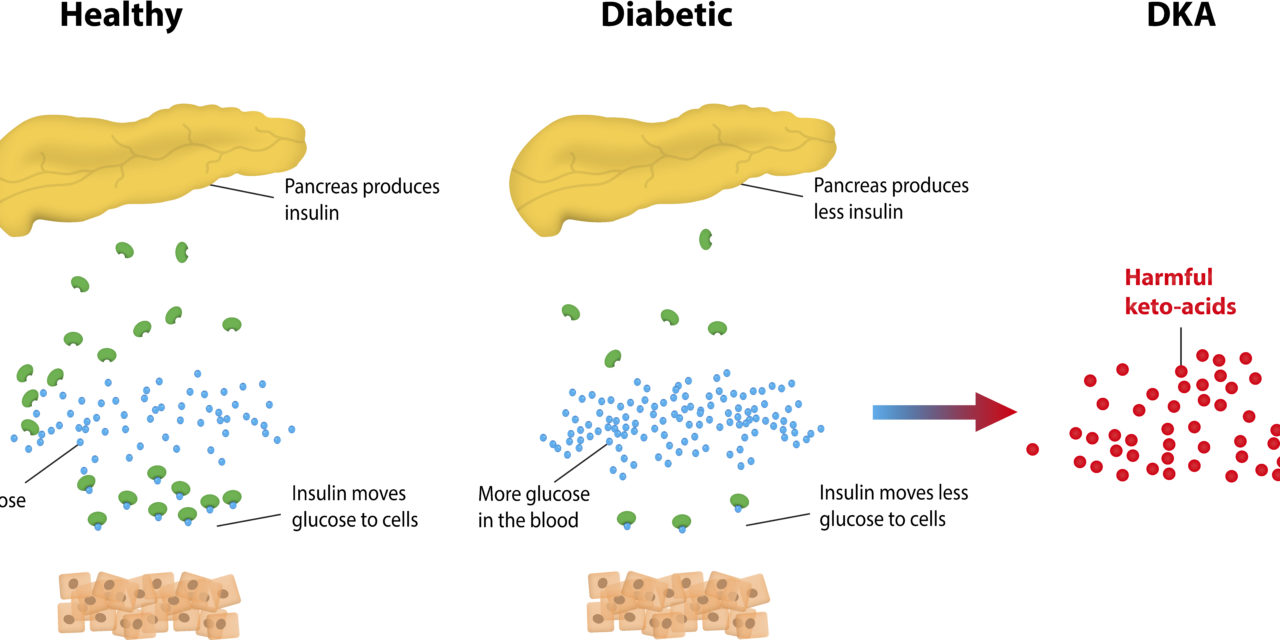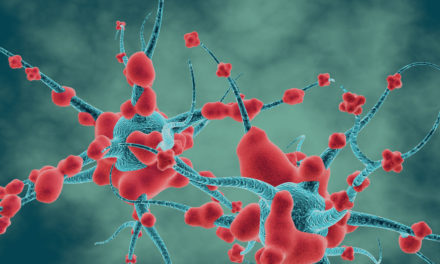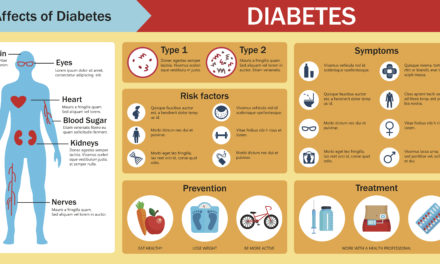Diabetic Ketoacidosis (DKA) is caused due to a lack of insulin in the body. The lack of insulin and corresponding elevation of glucagon lead to an increased release of glucose by the liver (a process that is normally suppressed by insulin) from glycogen via glycogenolysis and gluconeogenesis.
Diabetic Ketoacidosis is also considered a serious complication of diabetes that occurs when your body produces high levels of blood acids called ketones.
DKA is common in Type 1 Diabetes as this form of diabetes is associated with an absolute lack of insulin production by the islets of Langerhans in the pancreas. In Type 2 Diabetes, insulin production is present but is insufficient to meet the body’s requirements due to end-organ insulin resistance.
A lack of insulin usually due to:
- Unknown or newly diagnosed cases of type 1 diabetes
- Missed or inadequate doses of insulin, or spoiled insulin
- Infection
- Steroid medications
- An extremely stressful medical condition
Symptoms of DKA
DKA usually develops slowly. But when vomiting occurs, this life-threatening condition can develop in a few hours.
Early symptoms include the following:
- Thirst or a very dry mouth
- Frequent urination
- High blood glucose levels whenever glucose is greater than 240-300 mg/dL
- High levels of ketones
You can detect ketones with a simple blood test using a test strip, similar to a blood testing strip. Ask your health care provider when and how you should test for ketones.
According to the ADA, blood ketone testing should be performed on sick days every 4 to 6 hours and whenever glucose is greater than 240-300 mg/dL.
Also, check for ketones when you have any symptoms of DKA. Then, other symptoms appear:
- Constantly feeling tired
- Dry or flushed skin
- Nausea, vomiting for more than 2 hours, or abdominal pain
- Difficulty breathing
- Fruity odor on breath
- A hard time paying attention, or confusion
The Meaning of β-ketone Result
|
β-Hydroxybutyrate Reading
|
||
| Above 1.5 mmol/L | 0.6 to 1.5 mmol/L | Below 0.6 mmol/L |
| Readings above 1.5 indicate you may be at risk of developing diabetic ketoacidosis (DKA). Contact your healthcare provider immediately for advice. | Reading between 0.6 and 1.5 may indicate the development of a problem that may require medical assistance. Follow your healthcare provider’s instructions. | Reading below 0.6 are in the normal range. |
Caution: Ketoacidosis (DKA) is dangerous and serious. If you have any of the above symptoms, contact your health care provider IMMEDIATELY, or go to the nearest emergency room of your local hospital.









